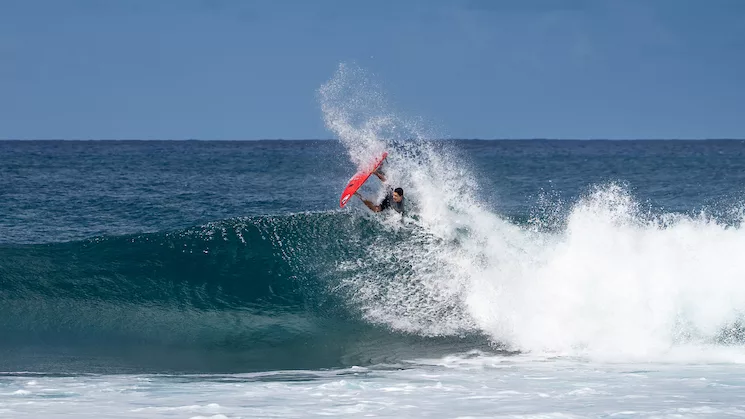Surf photography is a competitive career that involves capturing the beauty of waves and surfers. It’s a mobile job that can be done anywhere.
Surf photography involves capturing images of surfers and ocean waves, focusing on techniques like lighting, lens choice, and composition to create dynamic and visually appealing photos. The article offers tips on achieving clarity, capturing the action, and enhancing photos through editing, emphasizing practice and understanding the surfer’s perspective for impactful results.
It is a visually exhilarating genre that challenges and rewards photographers with dynamic, vibrant scenes. Our guide offers comprehensive techniques for capturing the essence of surf photography, elevating your skills to produce breathtaking images.
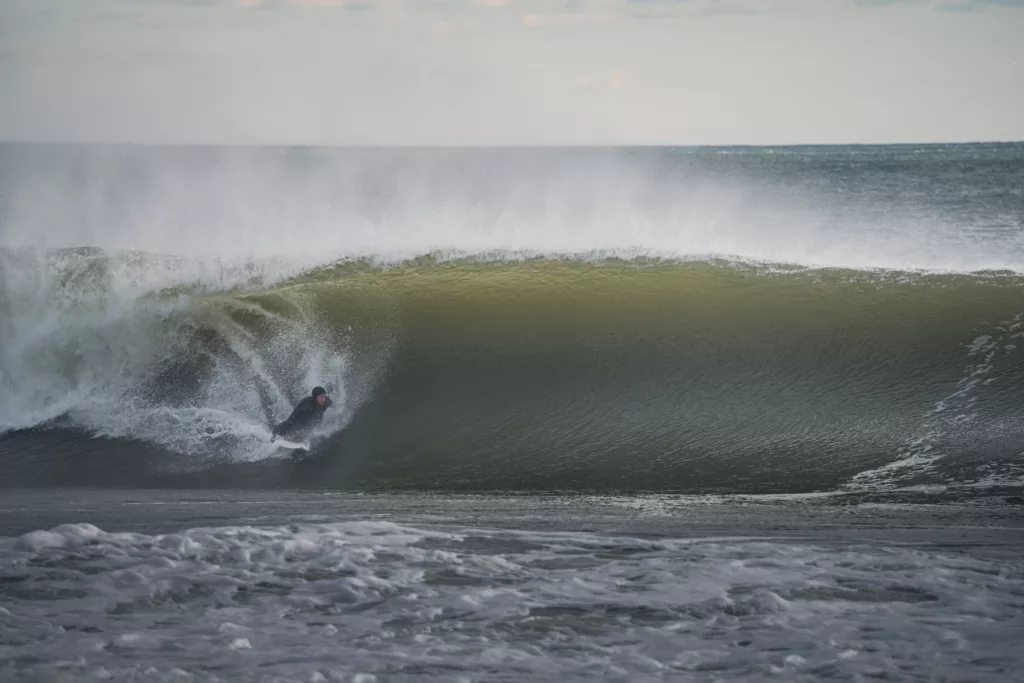
Understanding and Harnessing Light
Surf photography thrives on light. Study the lighting conditions meticulously. Observe how light interacts with the water, noting reflections and backlighting effects. Position yourself to minimize reflections for clearer shots of surfers and water textures.
Lens Selection: Achieving Depth and Detail
The choice of lens is pivotal. Opt for lenses with a longer focal length, around 300-400mm, to capture distant surfers with clarity. These lenses offer the reach necessary to bring distant action closer, providing detailed and impactful images.
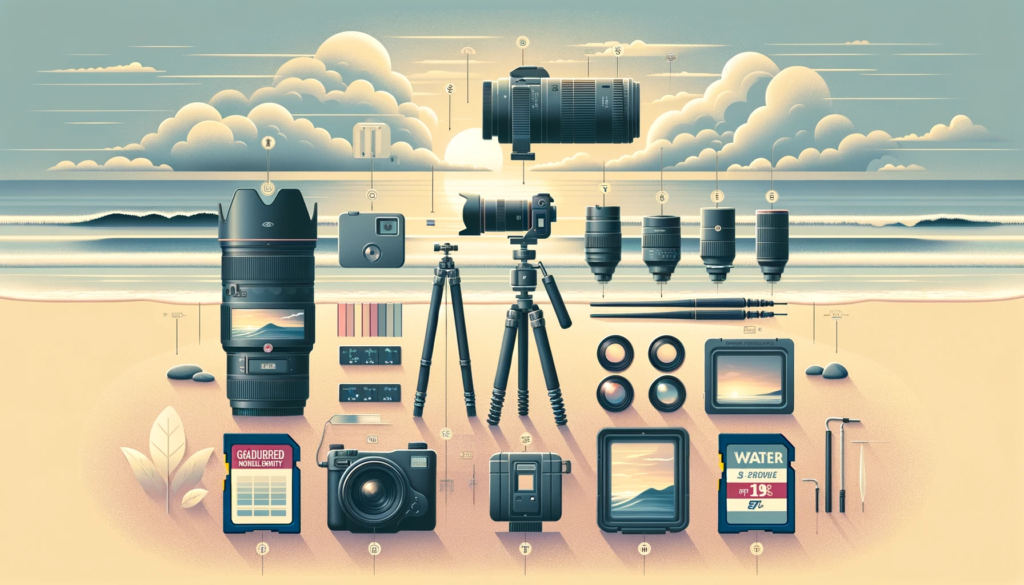
Shutter Speed: Freezing the Action
A fast shutter speed is essential in surf photography. Aim for a minimum of 1/640th of a second to freeze rapid movements and water sprays, ensuring crisp and clear images. This technique is crucial for capturing the high-speed dynamics of surfing.
Aperture Settings: Balancing Sharpness and Depth
Maintain a mid-range aperture. This setting allows for optimal sharpness while giving enough depth of field to keep the surfer in focus against a dynamic background. Adjust your aperture based on the available light and desired depth of field.
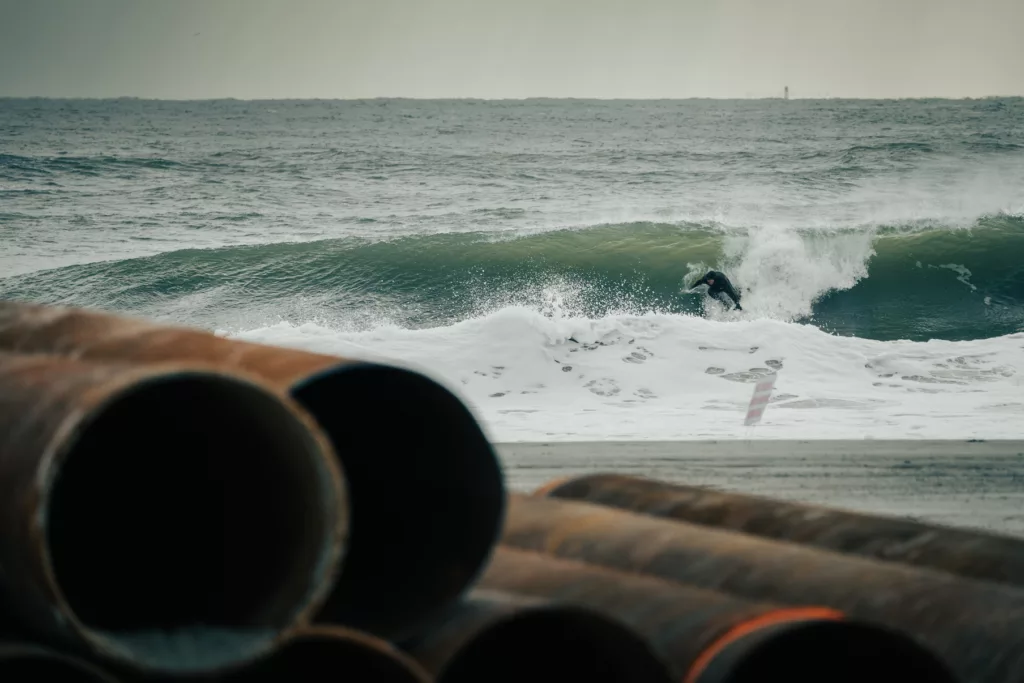
ISO Settings: Minimizing Noise
Keep the ISO as low as possible. Surf photography typically offers abundant light, allowing for low ISO settings, which reduces image noise and enhances image quality.
Utilizing a Circular Polarizing Filter
A circular polarizing filter is invaluable for managing reflections and enhancing colors. It’s particularly effective on bright days to control glare and improve the visual quality of water surfaces.
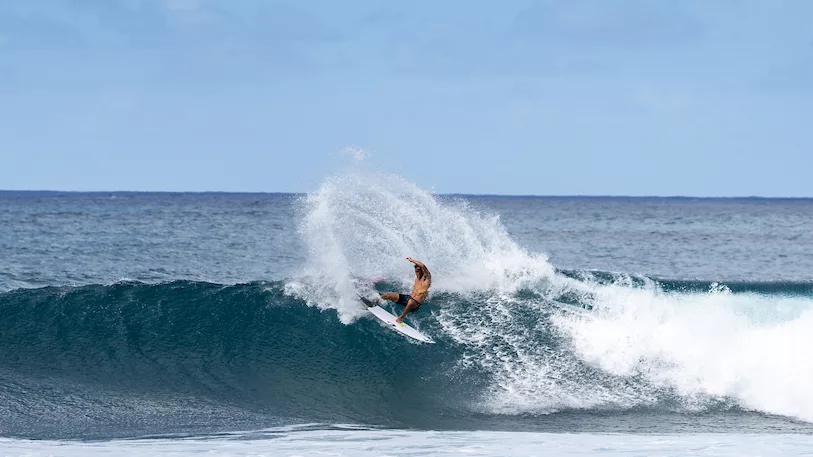
Exposure Techniques: Focusing on the Subject
Proper exposure is critical. Use spot metering to expose correctly for the surfer’s skin, balancing the bright surroundings. This technique helps maintain detail in the subject while managing the often-bright background.
Composition: Balancing Elements
Follow composition rules to create visually appealing images. Incorporate the rule of thirds, and balance the surfer with surrounding elements like waves and landscapes. Avoid distractions and aim for a harmonious composition.

Post-Processing: Enhancing Visual Impact
Post-processing plays a key role in surf photography. Use editing techniques to adjust exposure, contrast, and color balance. Consider selective adjustments to highlight the surfer or the water, adding drama and focus to your images.
The Importance of Location
Location significantly influences surf photography. Each spot offers unique challenges and opportunities. Be adaptable and use your surroundings creatively, whether shooting at renowned surf spots or less dramatic locales.
Storytelling through Images
A great surf photo tells a story. Capture the essence of the moment, whether it’s the thrill of a maneuver or the serenity of the sea. Look for shots that convey emotion and narrative.
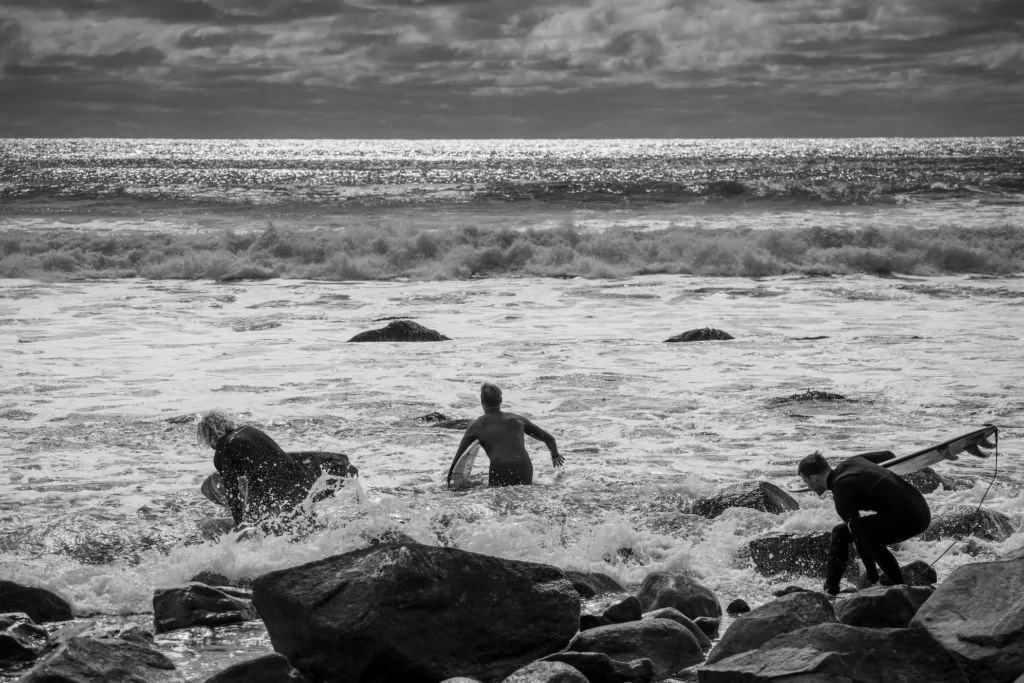
Continuous Learning and Practice
Develop your skills through continuous practice and study. Understand surfing culture and techniques to anticipate and capture defining moments. Practice enhances your ability to capture compelling images that resonate with viewers.
Professional Insights for Publication-Worthy Images
To create standout images, focus on lighting, composition, image quality, capturing peak action moments, and offering a unique perspective. These elements differentiate your work and increase its appeal for publication.
Gaining a Surfer’s Perspective
Understanding a surfer’s viewpoint enriches your photography. Collaborate with surfers to learn what makes a great surf photo from their perspective. This insight helps you create images that resonate both artistically and with the surfing community.
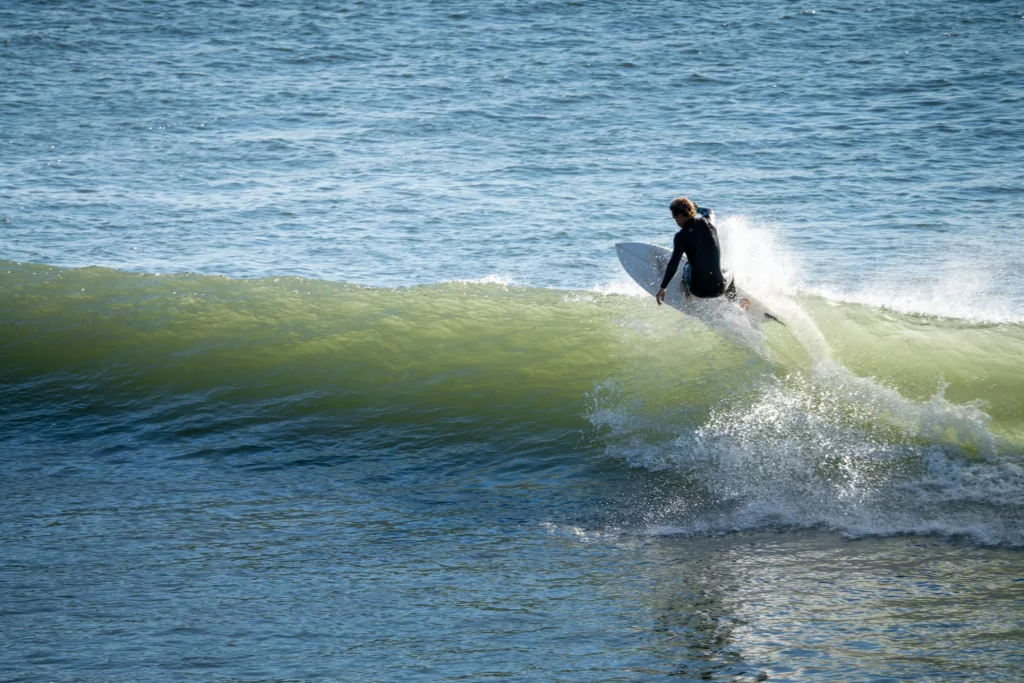
Creative Approaches in Challenging Locations
In locations with less impressive waves, creativity is key. Utilize foreground elements and shoot at different times of the day to exploit lighting variations. Be innovative in framing and perspective to create captivating images even in less ideal conditions.
For a comprehensive understanding of these techniques, consider integrating visual aids such as diagrams or photo examples that illustrate key concepts like composition, lighting, and lens selection. Utilizing Markdown syntax, you can effectively structure your article for clarity and engagement.
Enhancing Your Surf Photography Skills: Advanced Techniques
Embracing Different Weather Conditions
Embrace varying weather conditions to add drama to your photos. Overcast skies can create moodier scenes, while bright sunny days offer stark contrasts and vibrant colors. Utilize these conditions to add depth and emotion to your images.
The Role of the Horizon
Pay careful attention to the horizon line. A level horizon is crucial for a balanced composition, especially in a dynamic environment like the ocean. A skewed horizon can be disorienting unless used deliberately for artistic effect.
The Importance of Timing
Timing is everything in surf photography. Anticipate surfer movements and wave patterns to capture the peak action. This requires patience and a deep understanding of surfing dynamics. Timing also applies to the time of day; shooting during the golden hours of sunrise and sunset can dramatically enhance the quality and mood of your images.
Using Foreground Elements
Incorporate foreground elements to add depth and context to your photos. This can include beach features, other surfers, or even marine wildlife. These elements create a sense of place and can make your images more engaging.
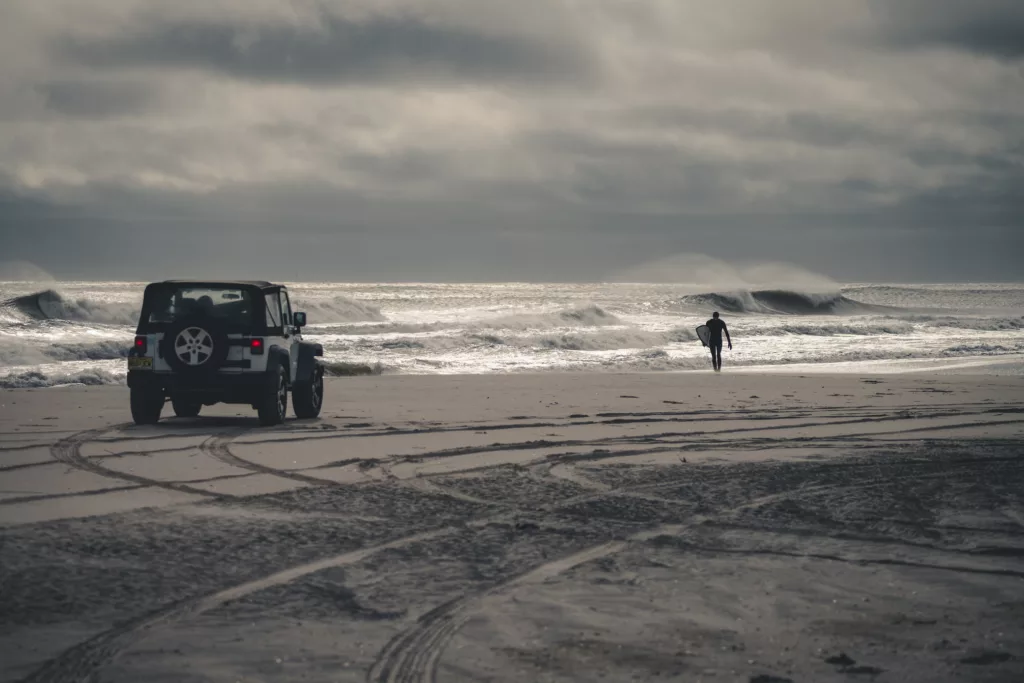
Maximizing the Use of Background
The background in surf photography can be as important as the main subject. It sets the scene and provides context. Look for interesting elements like distant mountains, clouds, or boats to enrich the composition of your shots.
Exploring Different Angles and Perspectives
Experiment with various shooting angles. Low angles can emphasize the power and height of waves, while elevated angles provide a comprehensive view of the action. Each angle offers a unique perspective, adding variety to your portfolio.
Building Relationships with Surfers
Developing relationships with surfers can provide unique shooting opportunities and insights. Surfers can share their experiences and preferences, which can be invaluable for understanding the sport and capturing authentic moments.
Continuous Learning and Adaptation
Surf photography is an evolving art form. Continuously learning new techniques, adapting to different environments, and staying abreast of technological advancements will keep your work fresh and engaging.
In conclusion, mastering surf photography requires a blend of technical skills, creative vision, and a deep understanding of the surfing world. By applying these advanced techniques and continuously seeking new perspectives, you can create captivating, publication-worthy surf photographs that stand out in any portfolio.
